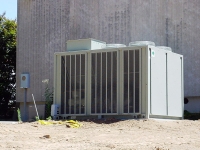Caloric Energy of Earthquakes Would Feed Millions
Tue, Jan 19, 2010In the news Monday were reports of a 6.0 magnitude earthquake near Guatemala City, Guatemala.� This follows last Monday�s news of a 7.0 magnitude quake in Haiti, which I wrote about in my last blog.� Our first concern for�Guatemala might be fear of a tragedy similar to Haiti.� After all, 6.0 is almost 7.0, or it�s at least 6/7 or 85% of the strength, right?� Fortunately (for the people of�Guatemala City), that�s totally wrong in the context of the Richter scale.






